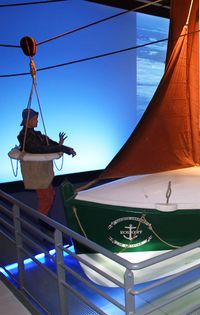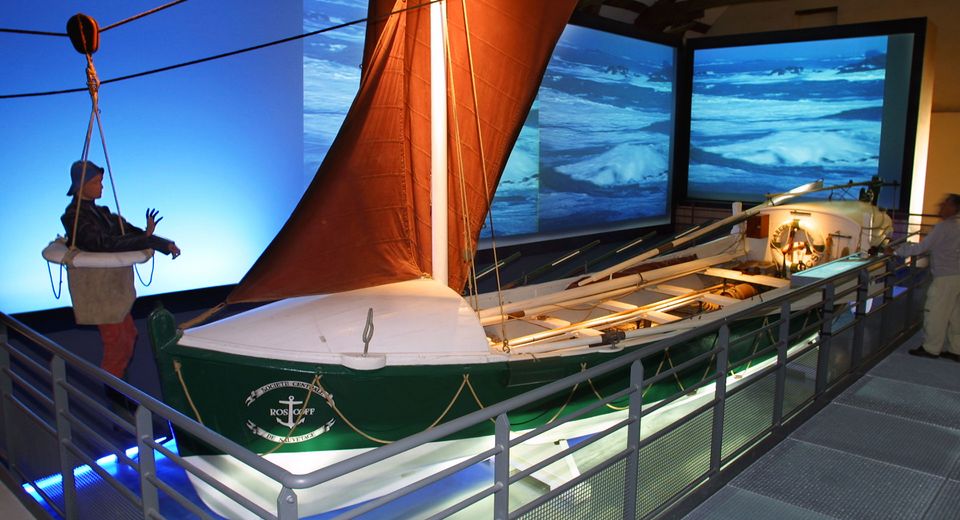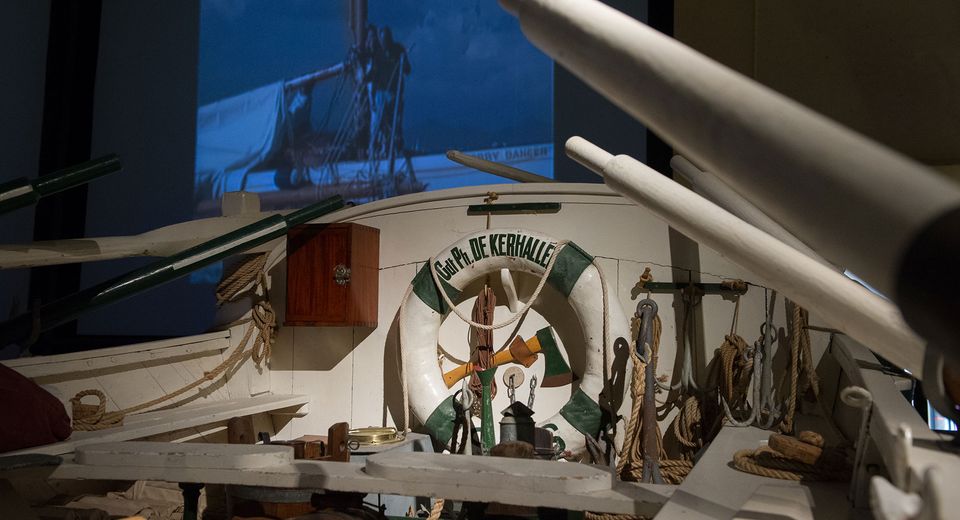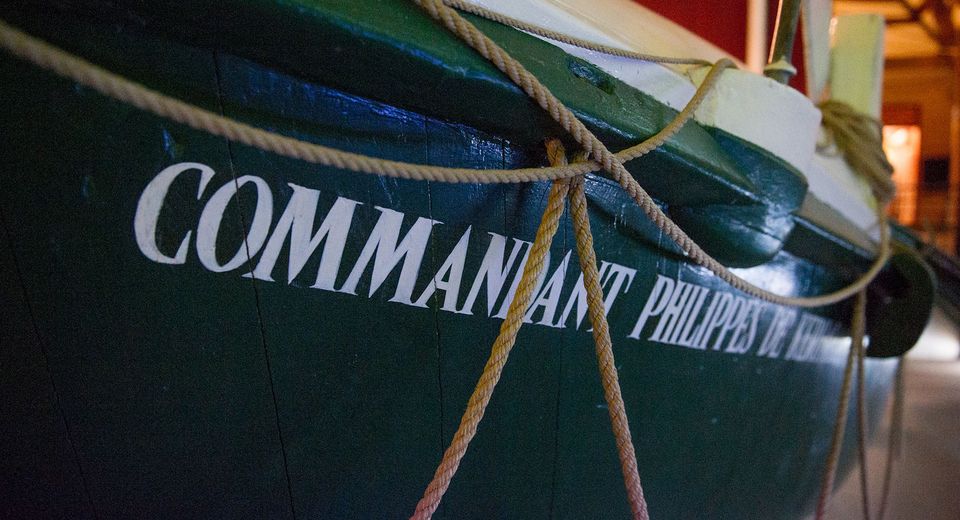Commandant Philippes de Kerhallet lifeboat
Port-Louis
Built at the Augustin Normand Shipyard in Le Havre in 1897, due to its length this lifeboat was one of the 10.10-metre series that equipped a good many sea rescue stations from the 1880s up to the Second World War: emblematic of bygone sea rescues, it is the oldest lifeboat of its kind still in existence.
Description
 Enlarge image : Commandant Philippes de Kerhallet
Enlarge image : Commandant Philippes de Kerhallet
This type of craft is known as a “self-righting lifeboat”. If it capsized, it righted itself automatically in around five seconds. It was unsinkable as, even when it was breached, the hull still remained afloat. And finally, even when filled with water up to its benches, it emptied in 25-30 seconds thanks to its self-draining system.
Characterised by its pair of watertight humpback chests located at either end, the Commandant Philippes de Kerhallet was equipped with two masts rigged with a jib and two lugsails. The “boss” in charge of its navigation stayed in the stern at the helm. The ten-man crew, the “swimmers”, were at the oars, five on each side, while the underboss or “brigadier” was posted as a lookout in the prow. The lifeboat was equipped with two teams, one replacing the other in the event of an emergency.
It was in service at the Roscoff station from 1897 to 1953. From 1961 onwards, after it had been decommissioned, it was used as a sail training vessel at a sailing school in south Finistère, and was then abandoned on a beach near Bénodet. It was rediscovered in 1974 by Doctor Pillet, a member of the National Society of Sea Rescuers (SNSM), who restored it and donated it to the National Maritime Museum in 1976.
The Augustin Normand shipyard
Founded in Honfleur in the 18th century, Chantiers Augustin Normand located in Le Havre early on in the 19th century. A highly reputed naval shipyard, it also participated in the design of warships, merchant vessels and pleasure craft. The 10.10-metre lifeboats inspired by the 9.78-metre English models were developed around 1880 in close consultation with the Central Shipwreck Rescue Society (SCSN).
The National Maritime Museum’s collections include numerous models of ships built in this naval shipyard, including the Vélox, a pleasure schooner, in 1907, the Napoléon, a propeller-driven aviso/schooner, in 1842, and a series of early torpedo boats built between 1878 and 1884.
Collection highlight
The essential works to see during your visit to the Musée national de la Marine in Brest, Port-Louis, Rochefort, Toulon, and soon in Paris.



